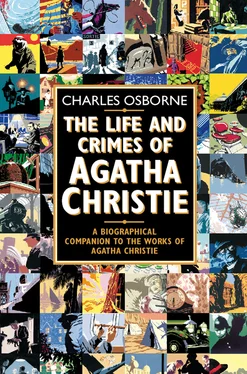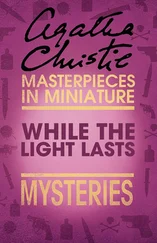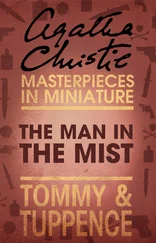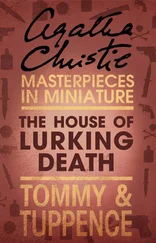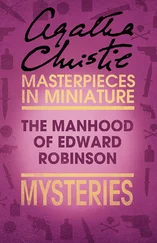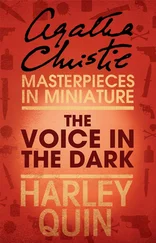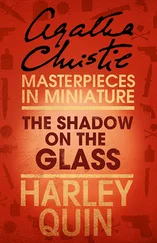In Partners in Crime, a collection of short stories, and the second Agatha Christie title to appear in 1929, the author reintroduced Tommy and Tuppence Beresford, the two engaging young sleuths from her second book, The Secret Adversary. Tommy and Tuppence have now been married for six years, and life has become a little too dull and predictable for them, at least for Tuppence. Tommy works for the Secret Service, but apparently in an administrative capacity, so there are no thrills to be had from that direction. When Tommy’s boss, Mr Carter, the chief of British Intelligence who was responsible in The Secret Adversary for starting them off on their adventures, offers Tommy and Tuppence a new assignment, they eagerly accept his offer. They are to take over for six months the running of the International Detective Agency, which had been a front for Bolshevik spying activities. In addition to keeping an eye open for letters with Russian postmarks, they may also take on any genuine cases which happen to come their way.
Having read, as he claims, ‘every detective novel that’s been published in the last ten years’, Tommy decides to adopt the character and methods of a different detective of fiction for each case, thus giving Mrs Christie the opportunity to produce a number of satires on the detectives of her rival crime writers. The Beresfords have acquired Albert, the young Cockney assistant porter from The Secret Adversary, who has become their all-purpose domestic servant, and who now takes on the job of office-boy for the International Detective Agency. At least, one supposes it is the same lad, for he has the same name and personality as the earlier Albert. But he is described now as being a tall lad of fifteen, which means that he can have been no more than nine when he was a lift-boy in Mayfair. This, if not impossible, is unlikely; but then, Agatha Christie’s chronology was ever inexact. Albert apparently stays in the employ of the Beresfords: we shall meet him in middle-age in N or M? and By the Pricking of My Thumbs, and as an elderly servant in Postern of Fate.
The Bolsheviks make an occasional appearance in Partners in Crime, and are routed in the final episode, but most of the stories in the book are self-contained adventures, with Tommy and Tuppence assuming the methods of a different detective of fiction for each case. In ‘The Affair of the Pink Pearl’, Tommy decides to solve the mystery in the manner of Dr John Thorndyke, the physician-detective hero of the stories of Richard Austin Freeman. In ‘The Adventure of the Sinister Stranger’ Tommy and Tuppence are the Okewood brothers, Desmond and Francis, who were popular crime solvers of the period. They are American detectives McCarty and Riordan for their next case, and Tommy is Sherlock Holmes in the one after that. For ‘Blindman’s Buff’ Tommy decides, appropriately, to be Thornley Colton, ‘the Blind Problemist’. Chesterton’s Father Brown, an Edgar Wallace investigator, ‘The Old Man in the Corner’, A. E. W. Mason’s Inspector Hanaud, Freeman Wills Crofts’ Inspector French, Roger Sheringham and Dr Reginald Fortune are all impersonated, until the final episode, ‘The Man Who Was Number 16’, when Tommy has the gall to pretend to be Hercule Poirot and Mrs Christie has a joke at the expense of The Big Four. ‘You recall, do you not,’ Tommy-Poirot says to Tuppence-Hastings, ‘the man who was No. 4. Him whom I crushed like an egg shell in the Dolomites … But he was not really dead … This is the man, but even more so, if I may put it. He is the 4 squared – in other words he is now the No. 16.’
When Agatha Christie wrote Partners in Crime, all those detectives would have been familiar names to readers of crime stories, but when she came to write her memoirs many years later, she could not even remember who some of them were, for many had faded into oblivion. If they had not been created by Mrs Christie, one feels certain that Tommy and Tuppence would also have failed to survive, for their adventures in Partners in Crime are really rather unmemorable. Most of the separate stories are too slight and far too brief for any suspense to be generated, and the reader has to make do with the light comedy of the Tommy-Tuppence relationship, for their ‘little grey cells’ are by no means the equal of Poirot’s. As parodies, the stories are superb; but, since the majority of the writers parodied are hardly known at all today, much of Mrs Christie’s skill has to be taken on trust.
The volume entitled The Sunningdale Mystery, published by Collins in 1929 as a 6d paperback, is in fact merely Chapters 11 to 22 of Partners in Crime.
Several of the stories in Partners in Crime were seen as part of a weekly Tommy and Tuppence series on London Weekend TV in 1993.
As no attempt has previously been made by writers on Agatha Christie to identify all of the crime writers parodied in Partners in Crime, the following table which lists them all may be of interest:
| Chapter |
Detective(s) impersonated |
Author (and some titles) |
| 3 |
Dr John Thorndyke |
Richard Austin Freeman (1862–1943): The Cat’s Eye; Dr Thorndyke Intervenes |
| 5 |
the brothers Desmond and Major Okewood (there is a passing reference to Sapper’s Bulldog Drummond stories) |
Valentine Williams (1883–1946), writing as Douglas Valentine. The Oakwood brothers appear in The Secret Hand, also entitled Okewood of the Secret Service |
| 7 |
(Timothy) McCarty and Riordan |
Isabel Ostrander (1885–1924). McCarty and Riordan appear in McCarty Incog. |
| 9 |
Sherlock Holmes |
Sir Arthur Conan Doyle (1859–1930); The Adventures of Sherlock Holmes; His Last Bow; The Case-book of Sherlock Holmes |
| 10 |
Thornley Colton |
Clinton H. Stagg. Thornley Colton is the hero of Thornley Colton, Blind Detective |
| 11 |
Father Brown |
G. K. Chesterton (1874–1936): The Innocence of Father Brown; The Secret of Father Brown; The Scandal of Father Brown |
| 13 |
The Busies |
Edgar Wallace (1875–1932): The Clue of the Twisted Candle; The Ringer |
| 15 |
The Old Man in the Corner |
Baroness Orczy (1865–1947): The Case of Miss Elliott; The Old Man in the Corner, Unravelled Knots |
| 17 |
Inspector Hanaud |
A. E. W. Mason (1865–1948): At the Villa Rose; The House of the Arrow |
| 19 |
Inspector French |
Freeman Wills Crofts (1879–1957): Inspector French’s Greatest Case; Tragedy in the Hollow |
| 20 |
Roger Sheringham |
Anthony Berkeley: The Wychford Poisoning Case; Top Story Murder, Murder in the Basement |
| 22 |
Reggie Fortune |
H. C. Bailey (1878–1961): Mr Fortune’s Practice; Mr Fortune Objects |
| 23 Hercule Poirot |
Agatha Christie (1890–1976): The Mysterious Affair at Styles; The Murder of Roger Ackroyd |
The Murder at the Vicarage MISS MARPLE (1930)
In the autumn of 1929, Agatha Christie decided to take a holiday alone. Rosalind was at school, and would not be at home until the Christmas holidays, so Agatha planned a visit to the West Indies and made all the necessary arrangements through Thomas Cook’s. Two days before she was to leave, a married couple at a dinner party spoke to her of the Middle East, where they had been stationed, and of the fascination of Baghdad. When they mentioned that you could travel most of the way there on the Orient Express, Agatha became extremely interested, for she had always wanted to travel on the famous international train which went from Calais to Istanbul. And when she realized that, from Baghdad, she would be able to visit the excavations at Ur, the biblical Ur of the Chaldees, the matter was decided. The following morning she rushed to Cook’s, cancelled her West Indian arrangements and made reservations on the Orient Express to Istanbul, and further on to Damascus and Baghdad.
Читать дальше
